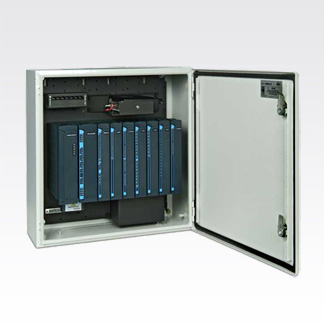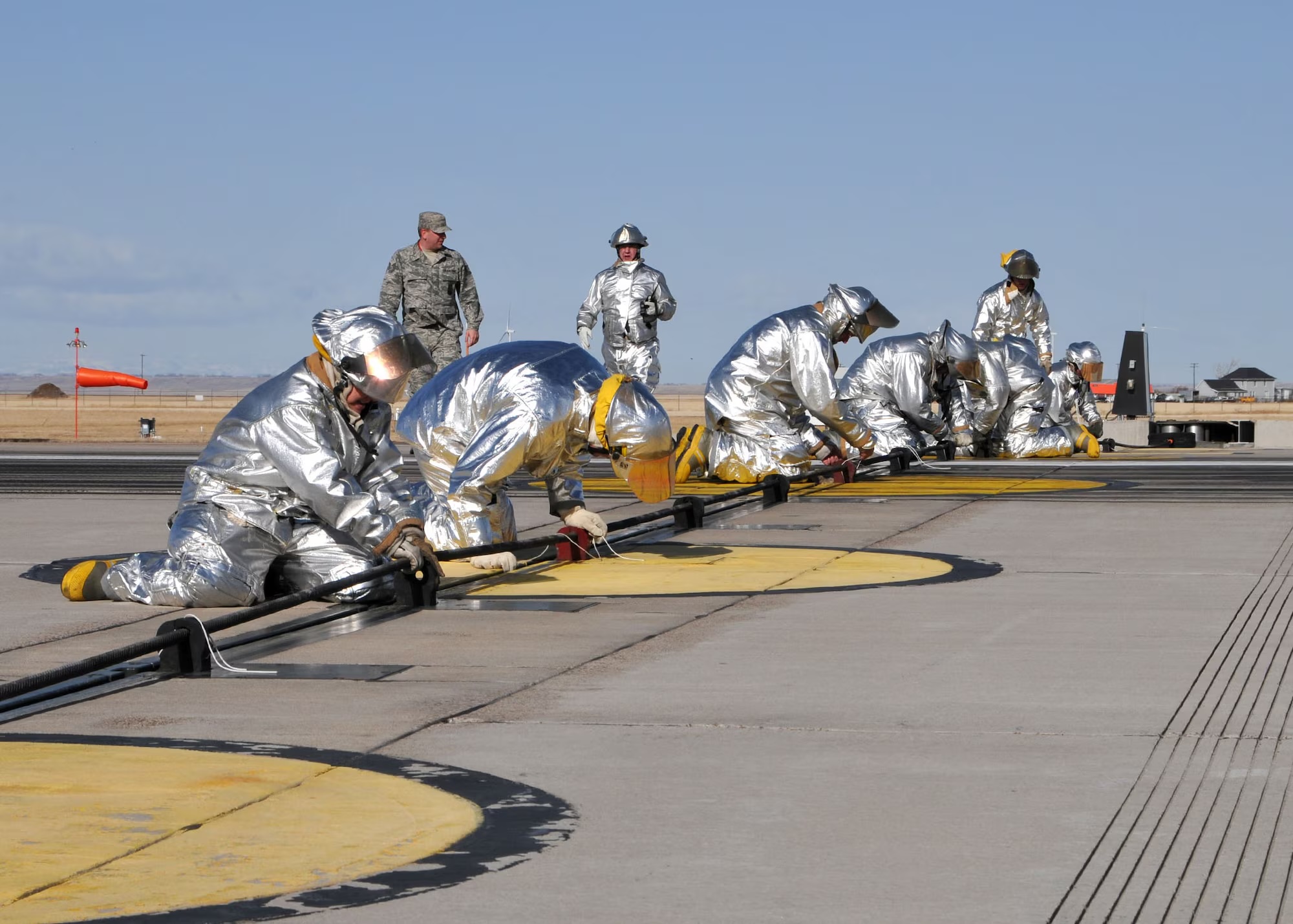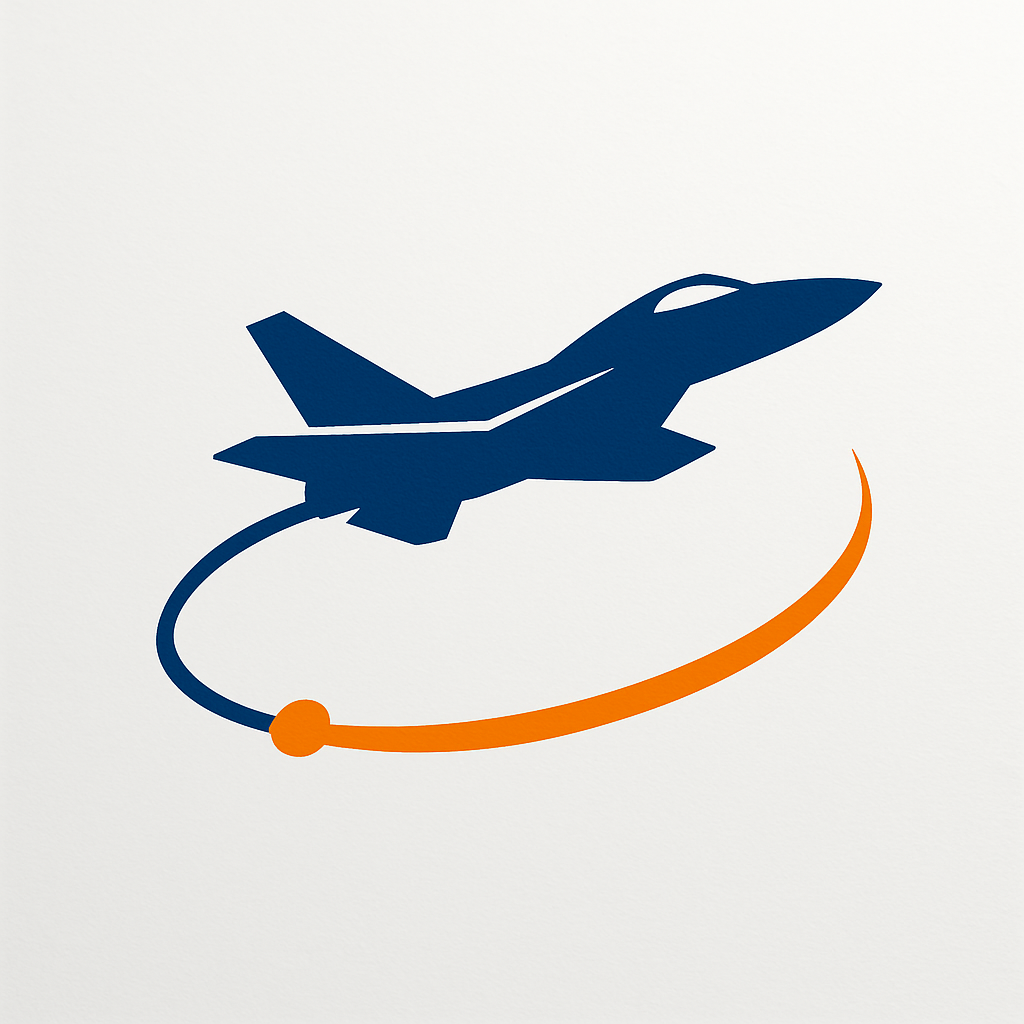Digital Transformation of Aircraft Arresting
For over three decades, Motorola has played a pivotal role in the evolution of aircraft arresting technology, transforming manual systems into sophisticated digital networks.
For over three decades, Motorola has played a pivotal role in the evolution of aircraft arresting technology, transforming manual systems into sophisticated digital networks that enhance safety, reliability, and operational efficiency. This comprehensive overview examines Motorola's contributions to aircraft arresting systems, from early MOSCAD implementations to today's advanced ACE3600-powered Phoenix Aircraft Arresting Control System (PAACS).
The integration of Motorola's SCADA (Supervisory Control and Data Acquisition) technology with traditional mechanical arresting systems represents one of the most significant advancements in aviation safety infrastructure, providing controllers with unprecedented capabilities for monitoring and managing these critical safety systems.

The Evolution of Control Systems
From manual operation to digital integration
Pre-1990: Manual Control Era
Before Motorola's involvement, aircraft arresting systems relied on manual control and monitoring. Raising or lowering arresting cables required physical presence at the runway, with status monitoring limited to visual inspection. This approach created significant operational challenges:
- Slow response times during emergencies
- Limited status visibility for controllers
- Increased personnel requirements
- Weather-dependent operations
- No automated data collection for maintenance or incident investigation
1990s: MOSCAD Integration
The first major advancement came with the integration of Motorola's MOSCAD-L (Motorola SCADA/PLC) remote-terminal units. These systems replaced thousands of feet of hard-wired circuits that ran beside runways, introducing digital control and monitoring capabilities.
Key innovations included:
- Remote operation from control towers
- Real-time status monitoring
- Reduced maintenance requirements
- Enhanced reliability through redundant communication paths
- Basic data logging capabilities
This initial digital transformation dramatically improved operational efficiency, allowing controllers to raise or lower cables with the push of a button rather than dispatching ground crews.
Early 2000s: Enhanced Integration
As digital technology advanced, so did Motorola's integration capabilities. Enhanced systems introduced more sophisticated monitoring and control features:
- Expanded sensor networks for comprehensive system monitoring
- Improved user interfaces for control tower operations
- Integration with other airfield systems
- Enhanced data collection and analysis capabilities
- Remote diagnostics for maintenance support
These advancements further reduced operational overhead while enhancing safety through improved visibility into system status and performance.
Mid-2000s: ACE3600 and PAACS
The introduction of Motorola's ACE3600 platform and the Phoenix Aircraft Arresting Control System (PAACS) marked a revolutionary advancement in aircraft arresting control technology. These sophisticated systems brought unprecedented capabilities:
- High-speed digital communication networks
- Advanced graphical user interfaces
- Comprehensive data logging and event recording
- Remote firmware updates with military-grade encryption
- Integration with base-wide security and communication systems
The ACE3600-powered PAACS became the standard for USAF installations worldwide, providing a robust, reliable platform for aircraft arresting control that continues to evolve with advancing technology.
Present Day: Advanced Integration
Today's Motorola-powered aircraft arresting control systems represent the culmination of decades of innovation, featuring:
- Cloud-based data storage and analysis
- Mobile monitoring capabilities for maintenance personnel
- Advanced predictive maintenance algorithms
- Enhanced security features to prevent unauthorized access
- Integration with broader airfield management systems
These systems continue to evolve, with ongoing development focused on enhancing reliability, security, and operational efficiency while reducing maintenance requirements and lifecycle costs.
Phoenix Aircraft Arresting Control System (PAACS)
The current standard in aircraft arresting control technology

The Phoenix Aircraft Arresting Control System (PAACS), powered by Motorola's ACE3600 platform, represents the current standard in aircraft arresting control technology. This sophisticated system combines advanced hardware, specialized software, and robust communication networks to provide comprehensive control and monitoring capabilities.
Key Components
- ACE3600 RTU: The core processing unit, featuring industrial-grade components designed for reliability in harsh environments
- Control Tower Interface: User-friendly touchscreen displays providing real-time system status and control capabilities
- Field Interface Units: Ruggedized components that connect to sensors and actuators at the runway
- Communication Network: Redundant pathways ensuring reliable connectivity between components
- Power Systems: Backup power supplies guaranteeing operation during power outages
The PAACS system's modular architecture allows for customization based on specific installation requirements, while its standardized core ensures consistent operation across different airfields. This approach balances flexibility with reliability, creating a system that can adapt to local conditions while maintaining the high standards required for critical safety infrastructure.
Technical Capabilities
Advanced features that enhance safety and operational efficiency
Real-Time Monitoring
Continuous monitoring of system status, including cable position, brake pressure, and operational readiness
Data Logging
Comprehensive recording of all system events, including engagements, maintenance activities, and status changes
Enhanced Security
Military-grade encryption and access controls preventing unauthorized system operation
Remote Diagnostics
Advanced troubleshooting capabilities allowing maintenance personnel to identify issues without physical inspection
Automated Testing
Scheduled self-diagnostic routines ensuring system readiness without manual intervention
Mobile Integration
Secure mobile applications providing maintenance personnel with system access from anywhere on base
Operational Benefits
How Motorola integration enhances aircraft arresting operations
The integration of Motorola's control systems with traditional aircraft arresting technology has delivered significant operational benefits for military airfields worldwide:
Enhanced Safety
Real-time monitoring ensures controllers always know the exact status of arresting systems, eliminating uncertainty during critical moments. Automated testing routines verify system readiness without requiring manual inspection, ensuring systems remain operational when needed.
Improved Efficiency
Remote operation eliminates the need to dispatch ground crews for routine cable raising and lowering, reducing personnel requirements and response times. Digital record-keeping automates maintenance scheduling and compliance tracking, ensuring systems receive proper care without administrative overhead.
Reduced Lifecycle Costs
Predictive maintenance capabilities identify potential issues before they cause failures, reducing repair costs and extending system lifespan. Remote diagnostics allow maintenance personnel to troubleshoot problems efficiently, minimizing downtime and optimizing resource allocation.
Enhanced Incident Investigation
Comprehensive data logging provides valuable information for incident investigation, allowing detailed analysis of system performance during engagements. This data supports continuous improvement of both equipment and operational procedures.

Global Data Specialists: Authorized Motorola Integrator
Expert support for aircraft arresting control systems

Global Data Specialists stands as an authorized Motorola SCADA integrator with specialized expertise in aircraft arresting control systems. Having spun out of MSI decades ago, our team brings unparalleled experience to the installation, maintenance, and optimization of these critical safety systems.
Our close working relationship with Motorola ensures access to the latest technology and support resources, allowing us to deliver comprehensive solutions that meet the exacting standards of military aviation.
From initial system design through installation, commissioning, and ongoing support, Global Data Specialists provides end-to-end expertise for aircraft arresting control systems, ensuring these critical safety systems remain ready when needed most.
Learn More About GDSFuture Directions
Emerging technologies and ongoing innovation
The integration of Motorola's control systems with aircraft arresting technology continues to evolve, with several promising directions for future development:
AI-Enhanced Operations
Artificial intelligence and machine learning algorithms are being developed to analyze engagement data and optimize system performance based on specific aircraft types and conditions. These systems could potentially predict maintenance needs with greater accuracy and provide real-time optimization during engagements.
Enhanced Integration
Future systems will likely feature tighter integration with broader airfield management systems, creating a unified operational picture for controllers. This could include automated arming of barriers when aircraft declare emergencies, reducing response times in critical situations.
Advanced Visualization
Next-generation user interfaces will likely incorporate augmented reality elements, providing maintenance personnel with visual guidance for complex procedures. These systems could overlay diagnostic information on physical components, streamlining troubleshooting and repair processes.
As these technologies mature, Motorola and Global Data Specialists remain at the forefront of their implementation, ensuring aircraft arresting systems continue to benefit from the latest advancements in digital control and monitoring technology.

Expert Support and Integration
As an authorized Motorola SCADA integrator with decades of experience, Global Data Specialists provides comprehensive support for aircraft arresting control systems.
Contact Global Data Specialists